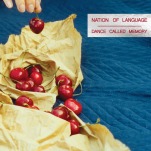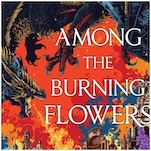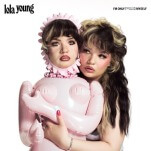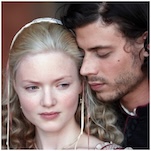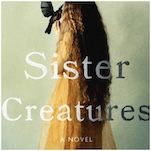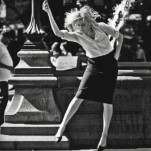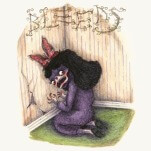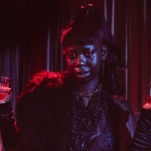Ancho Reyes Barrica Chile Liqueur Review
Photos via Campari Group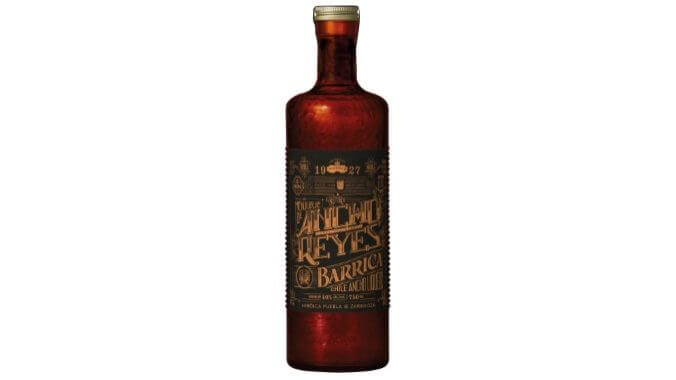
It’s a telling aspect of the fast-moving nature of the American cocktail renaissance that a product such as Ancho Reyes already feels like it’s been around forever. In truth, it’s been less than a decade since Ancho Reyes Original was introduced in 2014, adding a new dimension to the bartender’s toolkit in the process, one they didn’t necessarily know they needed before it arrived. The Mexican ancho chile liqueur quickly took the cocktail scene by storm, with its pungent combination of roasted chile pepperiness, fruity tones and alluring, smoky sweetness. It was followed in 2017 by its more verdant sibling, Ancho Reyes Verde, made from freshly roasted poblanos rather than sun-dried ancho chiles. Those liqueurs have been widely embraced in the cocktail scene and continue to be today–especially at your upscale taqueria/cocktail bar type joints–but there hasn’t been a new version of Ancho Reyes until now, in the form of the newly released Ancho Reyes Barrica.
It should likely not be surprising to find that “barrica” is simply Spanish for “cask” or “barrel,” and that’s what this is: A barrel-aged version of the original Ancho Reyes. Which is to say, this is based around the sun-dried ancho version of the liqueur rather than the fresher, brighter Ancho Reyes Verde. It weighs in at a healthy 40% ABV (80 proof), after being aged for two years in re-used bourbon barrels. I can’t help but wonder if they also experimented with freshly charred white oak casks, but presumably this would have imparted more oak influence and color than they were looking for. Still, I wonder what that would be like.
Of note: The marketing material for Ancho Reyes Barrica goes out of its way to stress that it’s meant at least partially for neat drinking, which is a way I must confess I’ve never used or experienced Ancho Reyes in the past. I’ve always thought of it more or less as the sort of cocktail ingredient to be used sparingly, and haven’t really seen people consume it neat before. But I suppose it does make sense that the barrel-aged version would be seen as more appropriate for that purpose.
Reviewing a new product like this, something that is obviously envisioned as being a major cocktail component, I feel like I need to experience it several ways, and I will thus break up this review into a few parts: Neat, and then in a couple different suggested cocktails. So, let’s get to it.
Ancho Reyes Barrica Neat
Putting this liqueur into a tasting glass, the first thing you note is that it really doesn’t look much different from the tawny, copper color of the original Ancho Reyes–it hasn’t seemed to suck up much additional color from its two years in ex-bourbon barrels. I suppose this was probably desired, so the product doesn’t affect the coloration of cocktails too strongly.
On the nose, this presents with deeply smoky vegetal tones, along with light caramel sweetness and traces of allspice-like spiciness. There’s a little chocolate-covered orange giving it depth, and a black tea-like maltiness.
On the palate, you immediately note the thick, satiny smooth mouthfeel. There’s an initial rush of peppery spice and dark dried fruit, combined with peppercorns and honey lozenges. I’m getting malt syrup sweetness, along with raisins and orange zest. The actual chile “heat” level is pretty modest, more mild than I was anticipating it might be drinking neat. Overall it’s easier to drink this way than I would have expected, although I expect that putting it over ice might be preferable to cut down the impression of sweetness at least a little. It settles into the back of the throat with a gentle but persistent chile prickle of heat, which offsets the considerable richness. I find myself thinking that this would probably be amazing as a pairing to a fresh cinnamon churro with dark chocolate sauce.
It’s been a while since I last had the Ancho Reyes Verde on its own, but this version seems less distinctly hot to me than I remember the Verde being. I’m not sure if that’s just a matter of personal taste, or objective reality. I found this ultimately allowed me to use the Barrica in larger quantities in a cocktail than I initially expected.
Ancho Reyes Barrica in Cocktails
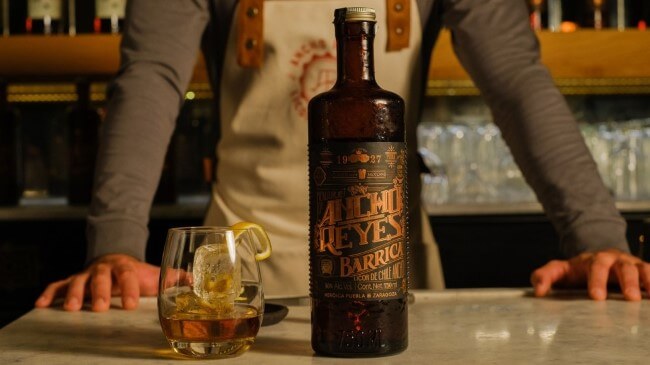
Right off the bat, it’s a little hard to know precisely how one might use Ancho Reyes Barrica specifically, because the official website hasn’t added recipes specifically for it just yet. So I decided to try a few twists on a few of the existing drinks.
First, and perhaps most obvious, is to use Ancho Reyes Barrica in the context of a Margarita. Using equal parts reposado tequila (which felt fitting, with the barrel-aged theme), Ancho Reyes Barrica and lime juice, with a tiny splash of agave, yielded a pleasant margarita with a surprisingly subtle chile heat and flavor–not as strong as I was expecting it to be with an equal-parts ratio. Notably, the official recipe on the Ancho Reyes website also has you leave out the orange liqueur/curacao typically used in most Margarita recipes. I added a bit of this back in afterward and found it distinctly enlivened the drink and added more complexity. I find myself thinking that if you want to make a Margarita with Ancho Reyes Barrica influence, you may just want to make your own preferred Marigarita recipe and then experiment with incorporating Ancho Reyes until the flavor seems right.
I then experimented with whipping up some Ancho Reyes-infused variants on the Manhattan, which is specifically suggested in the Ancho Reyes Barrica press release. Ratios being everything in a Manhattan, I first made one at a 3:1 ratio, with 3 parts rye whiskey to 1 part of a split base between vermouth and Ancho Reyes Barrica, and a dash of bitters. This yielded a drink that was perfectly pleasant but very subtle, still unmistakably a classic Manhattan. It was immediately clear that the Ancho Ryes needed to be pushed more if it was really going to register to the average drinker.
With that in mind, I switched to a 2:1 ratio and did away with the sweet vermouth entirely, making it simply 2 parts rye whiskey to 1 part Ancho Reyes Barrica, with a single dash of Angostura. This yielded a much more interesting drink, featuring a nice level of sweetness and a very silky texture from the liqueur. It had an expressive peppery flavor and mild chile heat–a tingling spice paired with caramel and rye whiskey spice and herbaceousness, making for a wonderful twist on the beloved classic. I will absolutely be making this variation again, and it’s safe to say this sold me on the product as one I would always want in my cabinet.
With that said, I’m not sure that Ancho Reyes Barrica represents a massive difference in general from the original Ancho Reyes that was introduced back in 2014–it doesn’t seem like as dramatic a variation as the Ancho Reyes Verde, for instance. But in general, this is a wonderful product and indispensable cocktail ingredient for those who want to infuse the fruity, spicy flavor of chiles into their cocktails, without necessarily burning their taste buds off with the sheer heat of other spicy tinctures. It’s all about balance here, and if you’re wondering what that means I would suggest you try one of those 2:1 ratio Ancho Manhattans sometime soon in order to find out.
Jim Vorel is a Paste staff writer and resident beer and liquor geek. You can follow him on Twitter for more drink writing.





